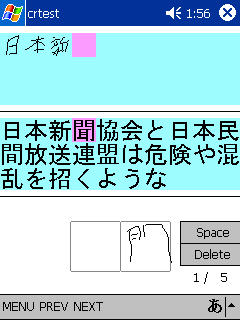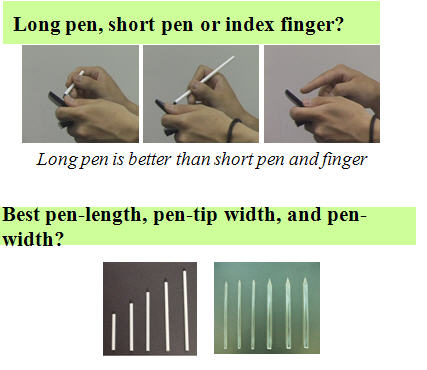This research presents seven experiments to determine the optimal size of a box for the input of handwriting characters on PDAs. The experiments involve consideration of boxes for different kinds of characters, different sizes and shapes (square and rectangular), the learning effect, and the age differences of users. The results are assessed in terms of high performance factors (e.g., high character recognition rates, minimal stroke protrusions outside the character box) and subjective ratings (e.g., ease of writing and minimum degree of fatigue). The results show that the optimal size of character boxes for the input of alphanumeric characters is 1.20 x 1.44 cm (rectangular), and for Kanji mixed with Kana characters and Hiragana & Katakana characters the optimal size is 1.44 x 1.44 cm (square). We believe that knowledge of the optimal size of a character input box will be useful for the design of the user interfaces of PDAs.
Publications
Ren, X. 2006. The Optimal Size of Text Entry Boxes on PDAs. In
Proceedings of CHI-SA 2006 , ACM Press. pp.31-40.
PDF
Ren, X. and Zhou, X. (2009). The Optimal Size of Handwriting Character Input Boxes on PDAs, to appear in Int. J. Human-Computer Interaction, Lawrence Erlbaum Associates.
![]()


